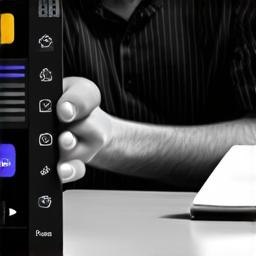Are you an Android developer looking to unlock hidden features and improve your app’s performance? Look no further! In this article, we will guide you through the process of enabling developer options on Android devices, including step-by-step instructions and real-life examples.
Enabling Developer Options on Android
Developer options are a set of advanced features that are hidden from regular users. These features can be used to optimize performance, improve battery life, and customize your device’s settings. However, in order to access these features, you must first enable developer options on your Android device.
- Open the “Settings” app on your Android device.
- Scroll down and tap on “About phone”.
- Tap on “Build number” multiple times until a message pops up saying “You are now a developer!”
- Go back to the “Settings” menu and tap on “Developer options”.
Now that you have enabled developer options, you can access these hidden features.
Unlocking Hidden Features
With developer options enabled, there are numerous features that you can now access, including:
- Adjusting DPI Scaling
- Customizing System UI
- Adjusting System Performance
- Enabling Debugging Tools

Real-life Examples
Let’s take a look at some real-life examples of how developer options can be used to improve your Android device’s performance and customize its settings:
Customizing the Navigation Drawer

If you find that your navigation drawer icons are too small, you can use developer options to adjust their size. Go to “System” in the “Developer options” menu, then tap on “Navigation drawer”. From here, you can toggle the switch for “Icon size” and choose a larger or smaller icon size.
Adjusting Battery Life
If you’re concerned about battery life, there are a number of settings in the “Developer options” menu that you can use to optimize your device’s power usage. For example, you can disable GPU-based rendering, which can improve battery life but may also slow down your device’s screen refresh rate. You can also adjust the amount of RAM that is allocated to different apps and system processes.
Debugging Your Apps
If you’re an Android developer, chances are you use debugging tools regularly to troubleshoot issues with your apps. With developer options enabled, you can access a range of debugging tools, including the ability to log cat output and use Dumpster to view app data. These tools can be invaluable for identifying and fixing bugs quickly and efficiently.
FAQs
What is the difference between regular settings and developer options?
Regular settings are the default settings that most users access when they go to the “Settings” app on their Android device. Developer options, on the other hand, are a set of advanced features that are hidden from regular users and can be accessed by enabling this setting in the “Settings” menu.
How do I enable developer options on my Android device?
- Go to the “Settings” app, then tap on “About phone”, then tap on “Build number” multiple times until a message pops up saying “You are now a developer!”.
- Then go back to the “Settings” menu and tap on “Developer options”.
What are some of the hidden features that I can access with developer options enabled?
With developer options enabled, you can access features such as adjusting DPI scaling, customizing system UI, optimizing system performance, and enabling debugging tools.
How do I customize the navigation drawer icons with developer options enabled?
To customize the navigation drawer icons with developer options enabled, go to “System” in the “Developer options” menu, then tap on “Navigation drawer”. From here, you can toggle the switch for “Icon size” and choose a larger or smaller icon size.
How do I optimize my device’s battery life with developer options enabled?
To optimize your device’s battery life with developer options enabled, go to “Battery” in the “Developer options” menu, then toggle the switch for “Disable GPU-based rendering”. You can also adjust the amount of RAM that is allocated to different apps and system processes.
How do I debug my apps with developer options enabled?
To debug your apps with developer options enabled, go to “Debugging” in the “Developer options” menu, then toggle the switch for “Allow debuggers”. From here, you can connect a debugger to your device and use it to step through your code and diagnose issues.
Conclusion
Enabling developer options on your Android device is a great way to unlock hidden features and improve its performance. By following these steps and experimenting with the various settings and tools available, you can customize your device’s settings to your liking and troubleshoot any issues that arise in your apps.

